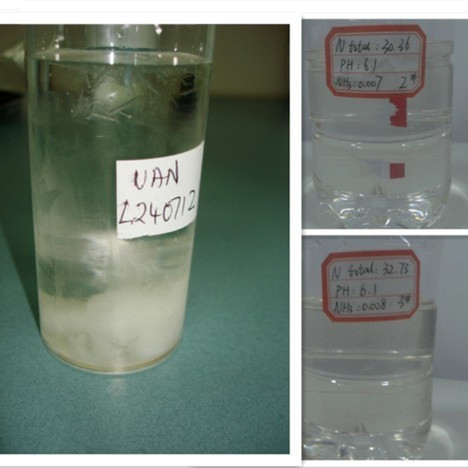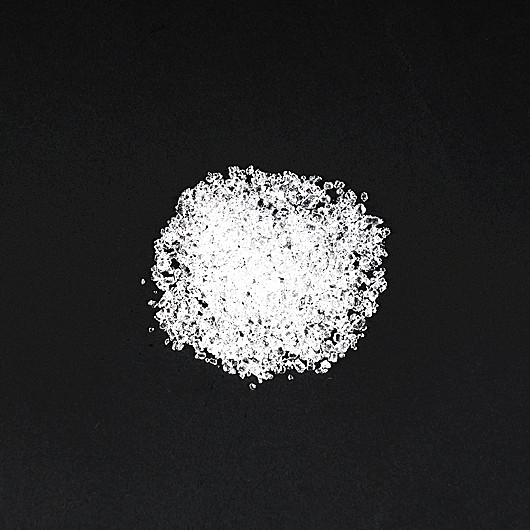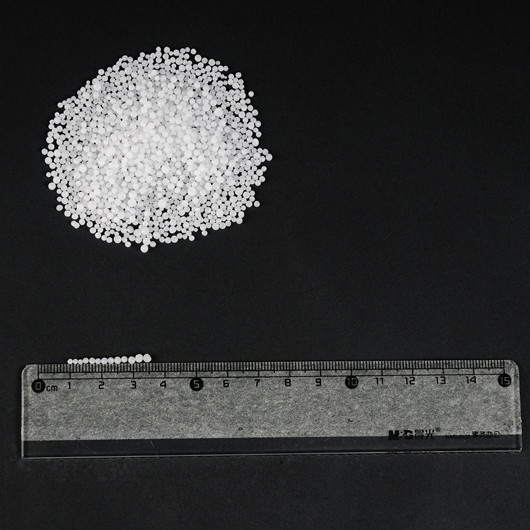Calcium nitrate fertilizer is a chemical compound with the formula Ca(NO3)2. It consists of two essential nutrients for plant growth: calcium (Ca) and nitrogen (N). This fertilizer is highly soluble in water, making it easy to apply to plants through irrigation or foliar spraying.
Benefits of Calcium Nitrate Fertilizer
Enhanced Growth and Yield
Data from agricultural studies have consistently shown that the application of calcium nitrate fertilizer significantly enhances tomato plant growth and boosts yields. For instance, a study conducted by the University of Agriculture reported a 20% increase in tomato yield when calcium nitrate was applied compared to untreated plants.
Example: Farmer John applied calcium nitrate fertilizer to his tomato crop, resulting in larger and healthier tomato plants. His yield increased from 100 pounds per plant to 120 pounds per plant.
Prevention of Calcium Deficiency
Calcium deficiency can lead to various problems in tomato plants, including blossom-end rot and poor fruit quality. Research conducted by the Agricultural Research Service (ARS) indicated that calcium nitrate fertilizer effectively prevents calcium deficiency in tomatoes.
Example: Sarah noticed blossom-end rot on her tomato plants in previous years. After applying calcium nitrate fertilizer, she observed a significant reduction in the occurrence of this issue.
Improved Fruit Quality
Data collected from tomato farms indicate that the use of calcium nitrate fertilizer results in tomatoes with better taste, texture, and shelf life. Consumer preference surveys have also shown a preference for tomatoes grown with calcium nitrate supplementation.
Example: A supermarket chain reported that customers consistently choose tomatoes labeled as "Calcium Nitrate-fortified" due to their superior taste and longer shelf life.
Soil pH Balance
Soil quality is crucial for tomato growth. Calcium nitrate fertilizer not only provides essential nutrients but also helps balance soil pH levels, making it more suitable for tomato cultivation. Soil pH data from various farms have shown improvements after calcium nitrate application.
Example: Mark's soil pH was initially too acidic for tomato cultivation, with a pH of 5.5. After using calcium nitrate fertilizer for a season, the soil pH increased to 6.5, resulting in healthier tomato plants.
Calcium nitrate fertilizer is a valuable asset for tomato growers, as supported by data and examples. Its benefits include enhanced growth, prevention of calcium deficiency, improved fruit quality, and soil pH balance. Farmers and gardeners can achieve healthier tomato plants and higher yields by incorporating calcium nitrate fertilizer into their cultivation practices. The evidence from studies and real-world examples underscores its importance in tomato production.
How to use calcium nitrate fertilizer correctly?
Fertilize based on a soil test: Before using calcium nitrate fertilizer, it is recommended to conduct a soil test to determine the nitrogen and calcium levels in the soil. Determine the amount of fertilizer to apply based on test results to avoid over- or under-fertilization.
Timing of Fertilization: It is best to start applying calcium nitrate fertilizer in the early stages of tomato plant growth and continue applying it throughout the growing season to ensure that the plants are fully absorbing the nutrients they need.
Apply fertilizer evenly: Make sure the calcium nitrate fertilizer is evenly distributed around the plant and avoid spreading fertilizer directly on the stems or leaves of the plant.
Combined with other fertilizers: Calcium nitrate fertilizer can be used with other fertilizers to provide complete nutritional support. Consider using with a fertilizer that contains other key elements such as phosphorus and potassium.
When should I apply calcium nitrate fertilizer to my tomato plants?
The timing of calcium nitrate fertilizer application to tomato plants is crucial for maximizing its benefits and ensuring healthy growth. Here's a more detailed explanation of when and how to apply calcium nitrate fertilizer to your tomato plants:
Initial Application: Begin applying calcium nitrate fertilizer when your tomato plants have reached a height of approximately 12 inches (30 cm). At this stage, the plants are actively growing, and their root systems are developing. Providing calcium early helps prevent calcium-related disorders such as blossom-end rot from occurring later in the growing season.
Repeat Applications: Throughout the growing season, continue to apply calcium nitrate fertilizer on a regular basis. Repeat the application every 2-4 weeks. This consistent supply of calcium supports ongoing growth and fruit development.
Soil Testing: To fine-tune your fertilizer application schedule, consider conducting soil tests at the beginning of the season and periodically thereafter. Soil tests can help determine the nutrient levels in your soil and whether any adjustments are needed.
Avoid Over-Fertilization: While it's essential to provide a consistent supply of calcium, be cautious not to over-fertilize. Overuse of calcium nitrate or excessive fertilization, in general, can lead to nutrient imbalances and potentially harm your tomato plants. Follow the manufacturer's recommendations for application rates.
Foliar Feeding: In addition to soil application, you can also apply calcium nitrate fertilizer as a foliar spray. This involves spraying a diluted solution directly onto the leaves. Foliar feeding can provide a quick nutrient boost, but it should not replace soil application entirely. Use foliar spraying in conjunction with soil applications for the best results.
Watering After Application: After applying calcium nitrate fertilizer, water your tomato plants thoroughly. This helps dissolve the fertilizer and allows the roots to absorb the nutrients effectively.
Monitor Plant Health: Throughout the growing season, keep a close eye on the health of your tomato plants. Watch for signs of calcium-related disorders like blossom-end rot and adjust your fertilizer application schedule if necessary.
By following this recommended timing for calcium nitrate fertilizer application, you can help ensure that your tomato plants receive a consistent supply of calcium, promoting healthy growth and minimizing the risk of common calcium-related issues. Remember that individual growing conditions may vary, so it's essential to observe your plants and adjust your fertilization schedule as needed.
What are the signs of over-fertilization with calcium nitrate?
Over-fertilization with calcium nitrate or any fertilizer can have negative effects on plants. Here are some common signs and symptoms of over-fertilization with calcium nitrate:
Leaf Burn: The edges of the leaves may turn brown or appear scorched. This is often a result of excessive salts from the fertilizer accumulating in the leaf margins.
Stunted Growth: While calcium nitrate promotes healthy growth when used appropriately, over-fertilization can lead to excessive vegetative growth at the expense of fruit production. Plants may become overly lush and not produce as many flowers or fruit.
Nutrient Imbalances: Over-fertilization with calcium nitrate can disrupt the balance of nutrients in the soil. This can lead to deficiencies in other essential nutrients, such as potassium or magnesium, which can manifest as specific nutrient deficiency symptoms.
Reduced Fruit Quality: Excessive nitrogen from over-fertilization can lead to the production of tomatoes that are less flavorful and may have a higher water content, resulting in reduced fruit quality.
Wilting and Root Damage: High levels of salts from over-fertilization can draw water away from plant roots, causing wilting, root damage, and ultimately plant stress.
Increased Disease Susceptibility: Stressed plants are more susceptible to diseases and pests. Over-fertilized plants may become weakened and more prone to various problems.
Environmental Impact: Excessive fertilizer use can lead to nutrient runoff, which can harm local water bodies and ecosystems. It's important to use fertilizers responsibly to minimize environmental impact.
It's crucial to avoid over-fertilization by following recommended application rates and guidelines for the specific fertilizer you are using. Conducting soil tests and monitoring plant health regularly can help you adjust your fertilization practices to meet your plants' needs without causing harm. If you suspect over-fertilization, you can take corrective actions such as flushing the soil with water to leach excess nutrients or reducing future fertilizer applications.
The duration of the effect of calcium nitrate fertilizer in the soil can vary depending on several factors, including environmental conditions, soil properties, and plant uptake. Generally, the effects of calcium nitrate fertilizer may last for a few weeks to a few months. Here are some factors that can influence how long the fertilizer's effects persist:
Environmental Conditions: The rate at which nutrients are released and available to plants is influenced by temperature, moisture, and microbial activity in the soil. In warmer and moister conditions, nutrients may become more readily available to plants, potentially leading to faster nutrient uptake. Conversely, in cold or dry conditions, nutrient availability may be slower.
Soil Type: Soil composition plays a significant role in how long nutrients remain available. Sandy soils tend to leach nutrients more quickly, which can result in a shorter duration of nutrient availability. Clay soils, on the other hand, can retain nutrients for a longer period but may also bind them in a way that makes them less accessible to plants.
Plant Uptake: The rate at which plants take up nutrients depends on their growth stage and nutrient demand. During periods of rapid growth, such as when the plant is flowering or fruiting, nutrient uptake may be higher, and the fertilizer's effects may be utilized more quickly.
Fertilizer Type: The specific formulation of calcium nitrate fertilizer can also impact how long its effects last. Some formulations are designed to provide a gradual release of nutrients over time, while others offer a more immediate nutrient boost.
Application Rate: The amount of calcium nitrate fertilizer applied to the soil can affect its longevity. Higher application rates may provide nutrients for a longer duration, but they also increase the risk of over-fertilization and nutrient runoff.
Soil pH: Soil pH can influence the availability of calcium and other nutrients to plants. Proper pH levels can enhance nutrient uptake, while extreme pH levels (either too acidic or too alkaline) can limit nutrient availability.
To ensure a consistent nutrient supply throughout the growing season, it's common practice to apply calcium nitrate fertilizer at regular intervals, typically every 2-4 weeks, especially for high-demand crops like tomatoes. Frequent applications help replenish nutrient levels as plants grow and absorb nutrients. Regular monitoring of plant health and soil nutrient levels can also guide the timing of fertilizer reapplication to meet the needs of your plants effectively.
Remember that while calcium nitrate fertilizer can benefit tomato plants, proper application and monitoring of your plants' specific needs are essential for achieving the best results. Always follow the instructions on the product label and adjust your fertilization practices based on your observations of plant health and growth.



